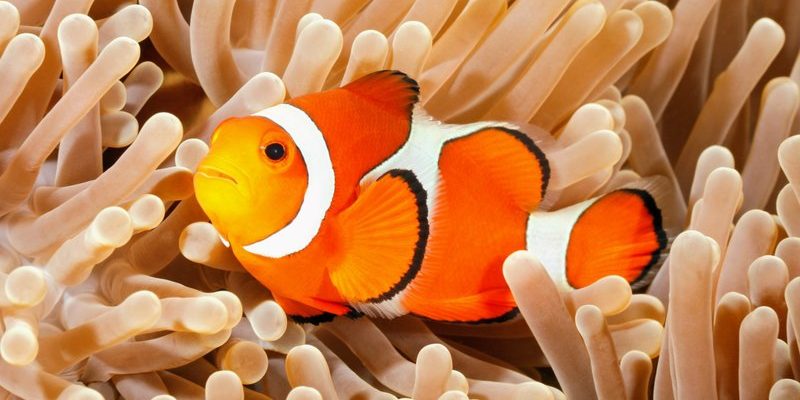![Clownfish Vs. [Similar Species] - Key Differences](https://gudri.com/wp-content/uploads/2025/06/Clownfish_Vs___Similar_Species______Key_Differences_image_0.jpg)
Imagine a vibrant underwater neighborhood filled with lively fish, plants, and cozy anemones. Both clownfish and anemonefish are like the friendly neighbors living in this aquatic community. They share many similarities but also have unique traits that set them apart. In this article, we’ll break down their differences in a way that’s easy to understand, even if you’re new to the fascinating world of marine life.
What Are Clownfish and Anemonefish?
Let’s start with a quick overview. Clownfish, known scientifically as *Amphiprioninae*, belong to a subfamily of the Pomacentridae family. They’re best known for their striking colors and energetic personalities. You might picture them darting around their anemone homes.
On the other hand, anemonefish is often used interchangeably with clownfish. But here’s the catch: not all anemonefish are clownfish. For instance, the term generally refers to all fish in the *Amphiprion* genus, which includes various species that share a special relationship with sea anemones. This cozy relationship provides protection for clownfish while offering food and shelter to the anemones.
So, while all clownfish are technically anemonefish, not all anemonefish are clownfish. It’s like saying all squares are rectangles, but not all rectangles are squares.
Physical Differences
When it comes to appearances, clownfish and anemonefish might seem quite similar at first glance. However, if you look closely, there are some distinctive features you can spot.
Clownfish are usually bright orange with black stripes, making them stand out in their environments. Their coloration can vary among species, but these bold colors serve as a warning to potential predators. Imagine wearing a bright orange outfit— it’s hard to go unnoticed!
Anemonefish, on the other hand, can come in various colors, including orange, yellow, and even black. Some species, like the *Amphiprion ocellaris*, might have different stripe patterns. This diversity means that while some may resemble clownfish, others can look quite different. So, think of them as colorful cousins, all part of the same family but sporting their own unique styles.
Habitat Preferences
Another crucial difference lies in where these fish choose to call home. Clownfish prefer warm, shallow waters, often found in the Indo-Pacific region. You’ll usually find them living in pairs nestled within the protective tentacles of sea anemones. These snuggly homes provide a safe haven from predators.
Anemonefish also inhabit similar regions, but their choice of anemone can vary significantly. Some may choose a specific type of anemone, while others adapt to different species of sea anemones. This adaptability allows them to thrive in a broader range of environments. It’s like preferring a specific type of coffee shop to work in — some go for cozy corners, while others are fine with any café as long as there’s good wi-fi!
Behavior and Social Structure
Behaviorally speaking, clownfish and anemonefish exhibit some fascinating social hierarchies. Clownfish often form monogamous pairs, meaning they stick together for life. Within these pairs, the female is typically larger and dominant, while the male takes on more nurturing roles. Imagine a little power couple navigating their colorful underwater world!
Anemonefish, due to their broader classifications, can show a range of social structures. Some species mirror the clownfish’s monogamous nature, while others might be more communal, living in small groups. This difference in social behavior can affect everything from breeding to territorial disputes, which is essential when it comes to protecting their homes.
Reproduction and Life Cycle
Let’s chat about how clownfish and anemonefish reproduce. Clownfish have a fascinating breeding ritual. They lay their eggs on flat surfaces near their sea anemone homes, which helps protect the young from predators. The male takes on the responsibility of guarding and tending to the eggs, keeping them safe until they hatch.
Anemonefish reproduction can follow a similar pattern but varies somewhat based on their specific species. Some might lay their eggs closer to the anemone, while others can be less particular. Regardless, both types of fish are dutiful parents, showcasing a nurturing side that’s seriously impressive!
Conservation Status
As we look at the future of both clownfish and anemonefish, conservation is a concern. Clownfish, known for their iconic status, face threats from habitat destruction, climate change, and the aquarium trade. Their reliance on specific sea anemones makes them vulnerable, and their populations can fluctuate based on environmental changes.
Anemonefish share similar concerns, and many species are at risk due to similar environmental pressures. This is a crucial conversation as we think about protecting these amazing fish and their habitats. Supporting sustainable practices can help ensure that these colorful characters continue to thrive in our oceans.
Final Thoughts
In the grand underwater adventure, clownfish and anemonefish are like two sides of the same coin. While they share many similarities, their differences add richness to our understanding of marine life. From their unique appearances to their fascinating behaviors, both types of fish play vital roles in the ecosystem.
Understanding these differences not only helps you appreciate these lively creatures more but also encourages awareness about conserving their habitats. So, the next time you see a clownfish or an anemonefish, remember the amazing traits that make them unique members of their vibrant underwater world. Let’s celebrate their differences together!

